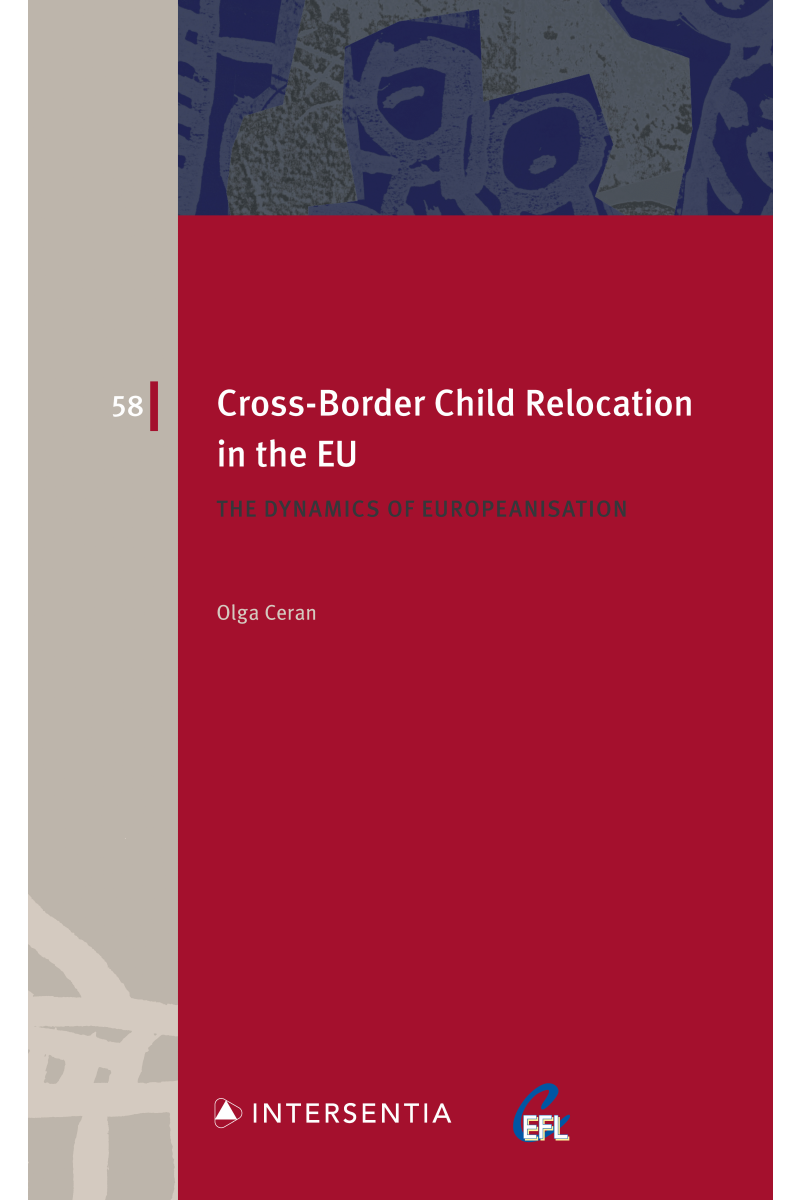 maestro
mastercard
visa
maestro
mastercard
visa

Cross-Border Child Relocation in the EU
The Dynamics of Europeanisation

Cross-border child relocation cases are among the most difficult issues in family law. Commentators across the globe disagree on the interpretation of the child's best interests and the relevance of adults' autonomy in this context. As relocations touch upon free movement—the foundation of European Union law—there is an increasing interest among scholars and practitioners alike in the influence of EU law on child relocation. However, considering the EU’s scope of competence in family law matters and the limited jurisprudence of the Court of Justice on such issues, many questions regarding the reach of EU law have remained open.
This book is the first monograph to investigate the dynamics of Europeanisation of cross-border child relocation law. What is the scope and nature of EU law's influence—both current and prospective—on cross-border child relocation? What are its effects on national legal systems? The book analyses the European legal framework of child relocation and harmonisation prospects in the field. It demonstrates the limitations of the legal pressures potentially exerted by the EU, considering the nature of its competence, but simultaneously conceptualises EU law’s influences from a constructivist perspective. Free movement constitutes the main paradigm of EU law and a defining feature of its community, shifting the scope of autonomy granted to it by its members. Hence, a mixture of traditional values and new ways of life—sanctioned by supranational law—might lead to new dilemmas regarding the assessment of children's and adults’ interests in child relocation cases. The suggested approach allows such influences to be analysed together with legal doctrines, both at the EU and the national level. Therefore, despite the current lack of explicit EU action on child relocation, the book qualitatively examines the dynamics of Europeanisation of child relocation sensu stricto—the processes of adaptation to EU law to be observed in child relocation case law from Germany, Poland, and England and Wales. The book shows how national judges occasionally draw from EU law’s contextual and legal features, but EU law does not (yet) seem to fundamentally challenge the established child relocation doctrines and lead to their convergence.
Cross-Border Child Relocation in the EU: The Dynamics of Europeanisation will be valuable to scholars, legal practitioners and civil servants with an interest in (cross-border) family law issues. It may also be of interest to researchers interested in the Europeanisation of private law more broadly.
About the Author
Olga Ceran is a Postdoctoral Researcher in Law & Philosophy at the Europa Institute of Leiden Law School (the Netherlands). She holds a PhD in Law and an LLM in Comparative, European and International Law from the European University Institute (Florence, Italy) as well as a Master's degree in Law from the University of Wrocław (Poland).
| Type of product | Book |
|---|---|
| Format | Paperback |
| EAN / ISSN | 9781839705182 / 9781839705205 |
| Series name | European Family Law |
| Weight | 517 g |
| Status | Available |
| Number of pages | 324 p. |
| Access to exercice | No |
| Publisher | Intersentia |
| Language | English |
| Publication Date | May 21, 2024 |
| Available on Strada Belgique | No |
| Available on Strada Europe | No |
| Available on Strada Luxembourg | No |
Downloads
- Table of Contents and Front Matter
- Chapter 1. Introduction
- Chapter 2. Setting the Scene: Child Relocation, Best Interests of the Child and the EU Context
- Chapter 3. EU Legal Competence and Harmonisation Prospects
- Chapter 4. Child Relocation and Fundamental Rights in Europe
- Chapter 5. Child Relocation and Restriction of Free Movement in EU Law
- Chapter 6. Child Relocation and the Contextual Influence of EU Law
- Chapter 7. Child Relocation and National Encounters with EU Law
- Chapter 8. Conclusions
- Bibliography
- Index